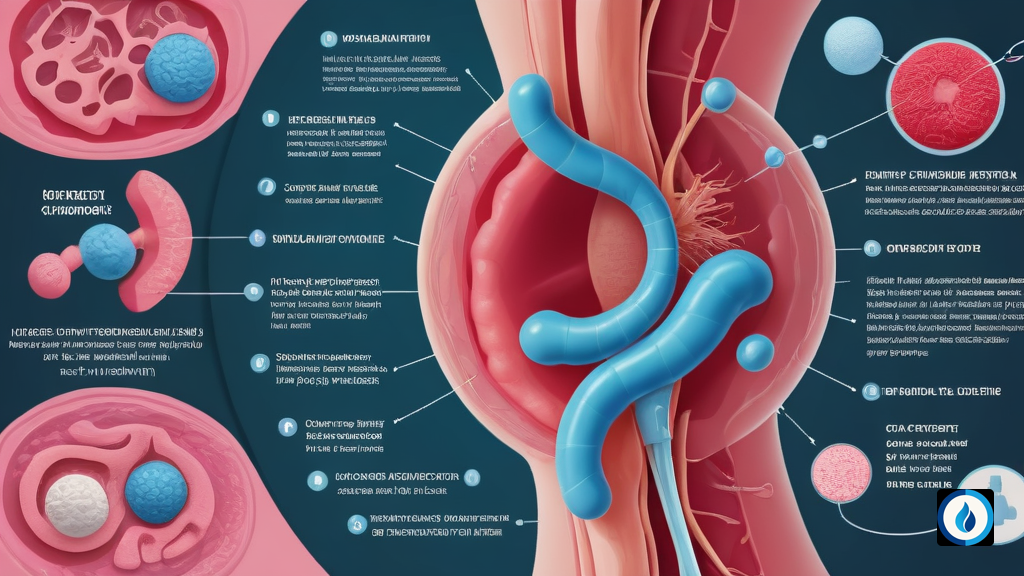Unraveling the Enigmatic Causes
Prostate cancer, a silent adversary that attacks the male prostate gland, has baffled researchers for decades. While genetic factors may play a role, their influence is difficult to isolate from the environmental factors lurking in our environment.
Genetic studies have pointed to a specific gene, HPC-1, as a possible culprit, increasing susceptibility to this disease. However, the hormonal dependence of prostate cancer is a critical factor that cannot be overlooked.
The absence of prostate cancer in eunuchs and its induction in rats by the administration of male and female sex hormones suggest an inescapable link with hormonal balance.
Environmental factors have also come into focus, with diets rich in animal fats, exposure to car exhaust smoke and air pollution as possible promoters of this cancer.
The role of sexually transmitted infectious agents remains an enigma, with studies showing conflicting results. Some suggest a higher risk associated with multiple sexual partners, while others indicate a higher risk in those with suppressed sexual activity.
Diagnosis: Exploring the Depths
Diagnosing prostate cancer involves a combination of tests to examine the prostate gland and blood. These tests can help detect and confirm the presence of this disease.
The digital rectal examination (DRE) is a manual procedure in which a doctor inserts a gloved finger into the rectum to feel the prostate for abnormalities.
Prostate-specific antigen (PSA) is a laboratory test that measures PSA levels in the blood. Elevated PSA levels may indicate prostate cancer, although they may also be present in other conditions.
Transrectal ultrasound uses sound waves to create images of the prostate, allowing doctors to visualize any abnormalities.
Biopsies are crucial to confirm the diagnosis. They involve removing samples of prostate tissue using needles inserted through the rectum or the skin between the scrotum and the rectum.
Prognosis and Treatment: Navigating the Options
The prognosis and treatment options for prostate cancer depend on several factors, including the stage of the cancer, the age, and the patient’s overall health.
The Gleason score and PSA index also play a role in determining prognosis.
Treatments for prostate cancer range from observation, which involves monitoring the patient without treatment, to more invasive interventions such as surgery, radiotherapy, hormonal therapy, cryosurgery and chemotherapy.
The choice of treatment depends on the individual circumstances of the patient, taking into account the benefits and risks, age and health status.
Symptoms: Recognizing the Subtle Signs
In its early stages, prostate cancer often has no noticeable symptoms. However, as it progresses, certain symptoms may appear that need to be addressed.
These symptoms may include frequent urination, especially at night, difficulty starting or stopping urination, weak or interrupted urinary flow, pain or burning when urinating, difficulty having erections, painful ejaculation, and blood in urine or semen.
It is important to remember that these symptoms may also be associated with other less serious conditions, but it is essential to consult a doctor for an accurate diagnosis.
Prevention: Addressing Risk Factors
While there is no guaranteed way to prevent prostate cancer, certain measures can help reduce the risk.
A healthy diet, rich in fruits, vegetables and fiber, can be beneficial. Certain foods, such as tomatoes, grapes, and melons, have been shown to contain antioxidants that may reduce the risk of prostate cancer.
Regular exercise, although its role is not completely clear, may also help reduce the risk of prostate cancer.
Coping Strategies: Navigating the Emotional Impact
A diagnosis of prostate cancer can be overwhelming, both for the patient and their loved ones. It is essential to develop coping strategies to navigate the emotional impact of this disease.
Maintaining a normal routine, seeking support from loved ones and professionals, engaging in activities that bring joy and meaning, and seeking mental health resources can help patients cope with emotional challenges.
Conclusion: A Call to Vigilance and Action
Prostate cancer remains an epidemic enigma, affecting countless men around the world. While the exact causes remain elusive, ongoing research and advances in diagnosis and treatment provide hope for a brighter future.
Awareness of risk factors, early detection, and informed navigation of treatment options are crucial to improving health outcomes and reducing the impact of this disease.
By joining forces, researchers, healthcare professionals and patients can unravel the mysteries of prostate cancer and empower men to take control of their prostate health.
